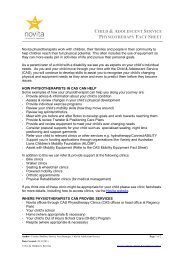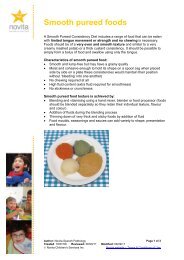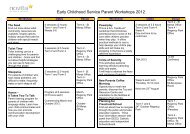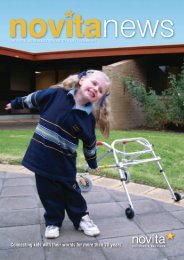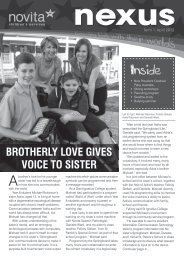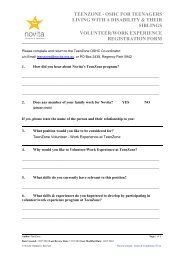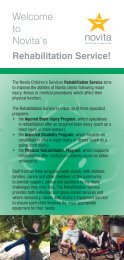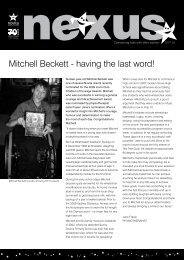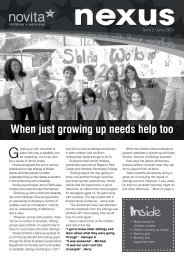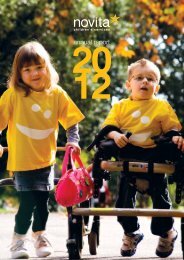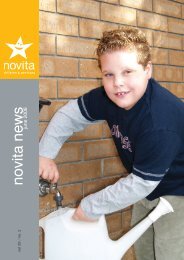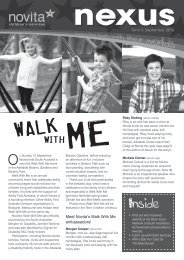Novita Research Report - 2004 to 2007 - Novita Children's Services
Novita Research Report - 2004 to 2007 - Novita Children's Services
Novita Research Report - 2004 to 2007 - Novita Children's Services
- No tags were found...
You also want an ePaper? Increase the reach of your titles
YUMPU automatically turns print PDFs into web optimized ePapers that Google loves.
32ImplicationsFor children and their families – from the results of this study, some changes may be made <strong>to</strong>service delivery for children and families who use SSGD’s.For therapists and managers – these results will provide a resource <strong>to</strong> increase awarenessof strengths and limitations of the SSGD, as well as provide speech pathologists a point ofreference <strong>to</strong> guide their goal setting and intervention with the use of a SSGD’s.StatusCompletedProject titleContribu<strong>to</strong>rsFundingSummaryMethodAssistive Technology solutions for students with physical disabilities: An analysis ofutility, cost and student satisfactionSonya Murchland, Annabelle Tilbrook, Helen Dawkins, Prue Shiosaki, Dr Alison Lane(University of South Australia), Terry Lyons, Jocelyn Kernot• Channel 7 Children’s <strong>Research</strong> FoundationThe aim of this study is <strong>to</strong> explore how many school students of <strong>Novita</strong> aged between eightand 18 years are using assistive technology in one form or another, what items they areusing, their levels of satisfaction with these items, and estimate the costs for the technologyitems and therapist support.The study has a number of parts:1. Each child’s file is reviewed <strong>to</strong> compare what technology is in use with what wasrecommended for provision.2. Mailed survey of <strong>Novita</strong> clients aged eight years and over, asking about the types ofassistive technology solutions in use at school and/or home and satisfaction with thattechnology using the QUEST 2.1: Children’s Version and Technology Survey. A modifiedDillman methodology was utilised for the mailed survey.3. An interview by telephone or face-<strong>to</strong> face with child or parent, <strong>to</strong> gain a greater depth ofinformation on satisfaction with technology, whether it is assisting school performanceand therefore increasing student self-esteem, and desirable features of assistivetechnology.Results Part 1 – File audit <strong>to</strong> be completed Oc<strong>to</strong>ber <strong>2007</strong>.Part 2 – Survey undertaken in June <strong>2007</strong>. 703 children were sent questionnaires withresponses gained from 152 (21%) and 133 (19%) completed questionnaires returned. Data iscurrently being analysed.Part 3 – To begin in 2008.ImplicationsFor clients – preferred range of effective technology items may be identified.For services – clearer understanding of documentation related <strong>to</strong> technology, costs andamount of support needed for children with technology items.StatusOngoing




